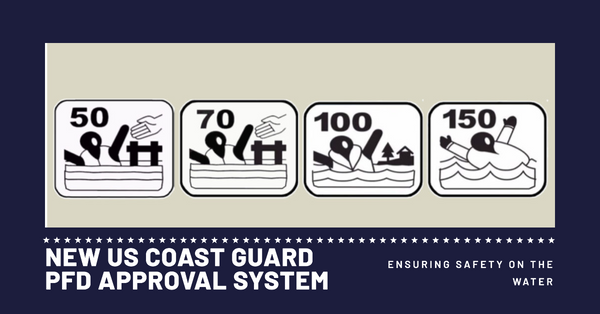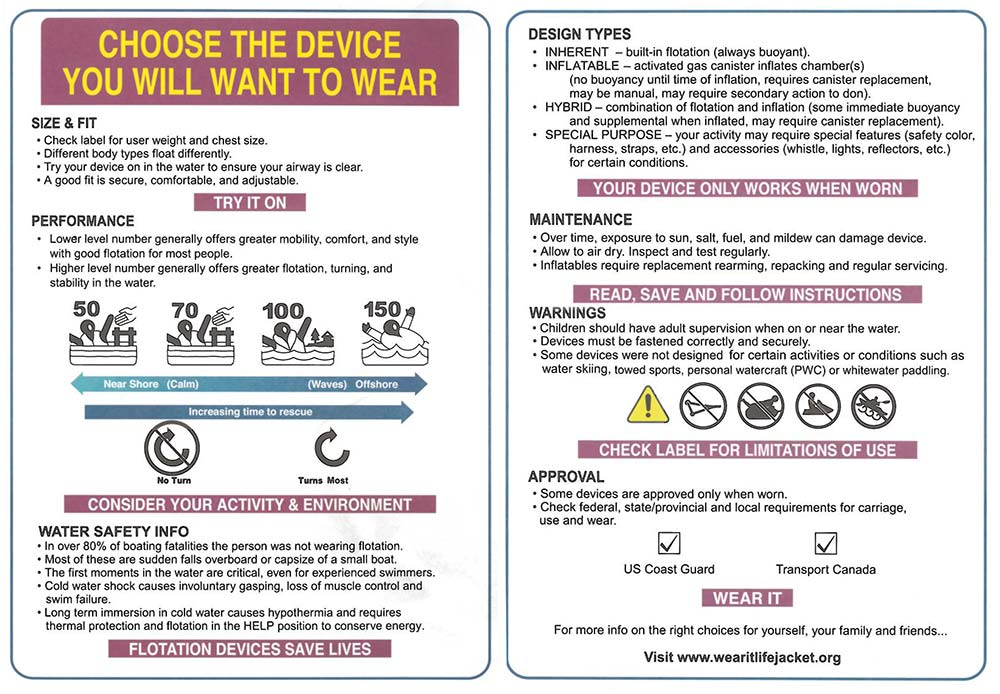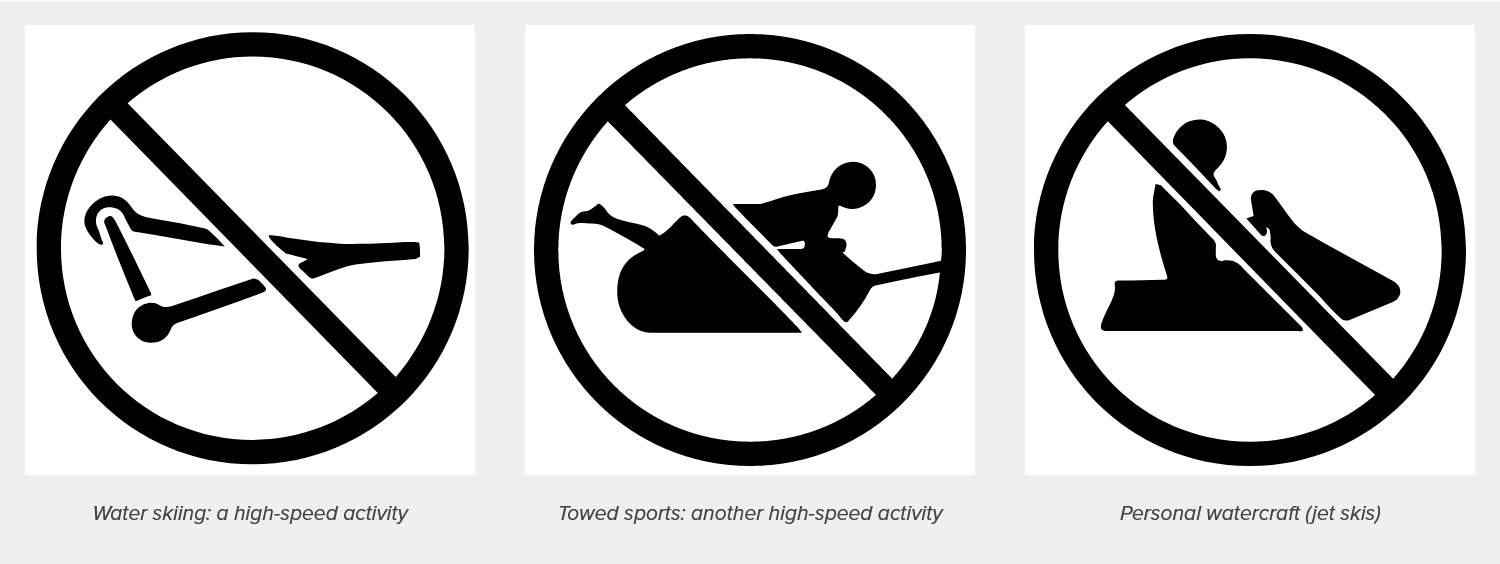
A Tidal Shift in Safety: Navigating the New USCG PFD Regulations for SUP Enthusiasts
The U.S. Coast Guard's (USCG) Personal Flotation Device (PFD) approval system is pivotal in ensuring that marine safety equipment meets rigorous standards. This article delves into the intricate details of the new PFD approval system, highlighting its importance, process, and impact on manufacturers and consumers.
Historical Background
Historically, the USCG has had a rigorous process for approving PFDs, ensuring they provide reliable buoyancy and visibility in emergency situations. However, evolving technology, changes in recreational boating, and international standards have necessitated updates to the system.
Key Highlights
-
Introduction to the USCG's Updated PFD Regulations: An overview of why the USCG revised its PFD standards and how these changes aim to enhance safety for water sports enthusiasts, including SUP users.
-
The Importance of the New Approval System: Exploring how the new PFD regulations increase safety by ensuring products meet higher buoyancy and visibility standards, aligning with international norms.
-
Understanding the New PFD Approval Process: A step-by-step breakdown of how PFDs are tested and approved under the new system, highlighting the focus on durability, comfort, and performance in water.
-
Impact on Manufacturers and Consumers: Discussing how the updated regulations encourage innovation among manufacturers and what SUP enthusiasts should expect in terms of product quality and price adjustments.
-
How to Choose a USCG-Approved PFD for SUP: Tips on selecting the right PFD for paddleboarding activities, considering the new performance levels and ensuring compliance with safety standards.
-
Ensuring Compliance While Paddleboarding: Advice on how SUP enthusiasts can stay compliant with the new regulations, including understanding the required PFD performance level for different water conditions.
Importance of the New System.
-
Enhanced Safety: The primary aim is to provide enhanced safety by ensuring that PFDs can reliably keep wearers afloat and visible.
-
Alignment with International Standards: By aligning more closely with international standards, the USCG ensures that its PFDs meet global benchmarks.
-
Incorporating New Technologies: As innovations emerge, it's imperative to update standards to reflect new safety capabilities.
The New Approval Process.
-
Submission: Manufacturers submit their PFDs along with detailed product specifications, including materials, buoyancy properties, and design details.
-
Initial Review: The USCG conducts an initial review to ensure the PFD meets baseline requirements.
-
Testing at Approved Facilities: PFDs undergo rigorous testing at Coast Guard-approved facilities. This includes:
-
Buoyancy Tests: This tests if the PFD can keep the user's head above water.
-
Visibility Tests: Checking if the PFD ensures the wearer is visible in various water conditions.
-
Durability Tests: To ensure PFDs can withstand wear and tear and harsh environmental conditions.
-
Comfort and Fit Tests: To ensure wearers can move comfortably and perform necessary actions while wearing the PFD.
-
-
Review of Test Results: The USCG reviews the test results to determine if the PFD meets all standards.
-
Final Approval: If the PFD passes all tests and evaluations, the USCG issues an approval certificate.
-
Ongoing Monitoring: Approved PFDs may be subject to periodic reviews to ensure they continue to meet standards, especially if there are design changes.
Impact on Manufacturers.
-
Innovation: Manufacturers are encouraged to invest in R&D to ensure their PFDs utilize the latest safety technologies.
-
Streamlined International Sales: Alignment with international standards allows manufacturers to market their products more widely, as they meet a global benchmark.
-
Potential Cost Increases: Meeting the new standards may increase manufacturing costs, which could be passed on to consumers.
Impact on Consumers.
-
Increased Confidence: Consumers can have greater confidence in the safety and efficacy of approved PFDs.
-
Higher Costs: Due to potential increases in manufacturing costs, consumers may see a rise in PFD prices.
-
Greater Choice: As manufacturers innovate to meet new standards, consumers may benefit from a wider range of advanced PFD options.
What Was the Old USCG PFD Approval System?

Historically, the USCG categorized PFDs into five different types, labeled as Type I through Type V. The classification was based mainly on the buoyancy, intended use, and the water conditions they were designed for:
-
Type I: Offshore Life Jackets, ideal for open and rough waters.
-
Type II: Nearshore Vests, suited for calmer inshore waters.
-
Type III: Flotation Aids, designed for specialized activities and allowed more freedom of movement.
-
Type IV: Throwable Devices, such as ring buoys or floating cushions.
-
Type V: Special Use Devices, which included a variety of PFDs specifically designed for particular activities.
An Introduction to PFD Performance Levels
The new PFD approval system has shifted its focus from broad categories to "Performance Levels." The performance levels provide a more precise indication of how the PFD performs in specific conditions, considering factors such as buoyancy, turn performance, and freeboard (the distance between the water's surface and the user's mouth).
A Breakdown of Performance Levels Specifics
There are distinct performance levels, each defined by specific criteria:
-
Level 50: Suitable for conscious users in sheltered waters.
-
Level 100: Appropriate for those who may have to wait for a rescue, but are likely to do so in relatively calm waters.
-
Level 150: Designed for users in all waters where they might face severe conditions. Good for unconscious users to keep their head above water.
-
Level 275: Intended for extreme conditions, or users carrying heavy equipment.
What Do USCG/Transport Canada Approval System Icons Mean?

Both the USCG and Transport Canada have adopted a system of icons for PFD labels, offering a visual representation of a PFD's intended use and performance:
-
Wave Icon: Represents the conditions the PFD is designed for. More waves depict rougher waters.
-
Person Icon: Indicates the user group, like adults, children, or infants.
-
Number: Relates to the performance level of the PFD (50, 100, 150, etc.).
-
Activity Icons: Depict activities like water skiing, fishing, or kayaking, to give an idea of its intended use.

How Do I Understand the Panels and Labels on a USCG/Transport Canada Approval System PFD?
Labels and panels on PFDs approved by the USCG/Transport Canada are designed for clarity:
-
Front Panel: Often displays the performance level and may have icons indicating its intended use.
-
Inside Panel: Contains maintenance instructions, limitations, buoyancy rating, temperature rating, and potentially an expiration date.
-
Back Panel: Generally, displays the approval stamp to confirm that the PFD meets the necessary standards.
Miscellaneous Information About the USCG/Transport Canada Approval System
-
Harmonized Standards: One notable aspect of the updated system is its attempt to harmonize standards between the US and Canada, facilitating mutual recognition and simplifying the process for manufacturers.
-
Regular Updates: Both organizations actively update their standards to accommodate new research, technology, and safety concerns.
-
Emphasis on Education: Apart from ensuring that PFDs adhere to stringent standards, both the USCG and Transport Canada focus on educating the public about proper PFD selection, use, and maintenance.
-
Some PFD sizes in the new system may have different weight limits than other sizes in the same model. Read the label to ensure you have the right PFD for your weight and chest circumference.
-
If a manufacturer still produces PFD models that were originally approved under the old system, then the Types and Intended Use labels will be on the PFDs. Therefore, some new PFDs will still be coming to market using the old labeling system. When a new design is submitted for approval, or significant changes are proposed for an existing model, the labeling will be updated to the new system.
-
Existing PFDs approved under the old system are still legal for use as long as they are in good condition.
In essence, the updated USCG/Transport Canada PFD approval system's primary objective is to enhance marine safety through clarity, stringent standards, and a user-centric approach.
Conclusion
Understanding the new categories and being able to accurately interpret the tags is crucial for marine safety. With the USCG's updated PFD approval system, users can be confident in their PFD selection, ensuring they are equipped with the most suitable flotation device for their activity and conditions.
State Regulations at the time this article was written.
Take this as a rough guide as states are constantly updating their regulations. Also, pay attention to specific locations within the state that may have their own rules that are more strict than the state regulations. Causey Reservoir in Utah is a good example of this.
Alabama - PFDs are required for all paddleboarders.
Alaska - PFDs are required for paddleboarders under age 13. PFDs must also be worn if paddling in rough water or large waves.
Arizona - PFDs are required for paddleboarders under age 12.
Arkansas - PFDs are required for all paddleboarders.
California - PFDs are required for paddleboarders under age 13. PFDs must also be worn if paddling in rough water or large waves.
Colorado - PFDs are required for paddleboarders under age 13.
Connecticut - PFDs are required for all paddleboarders.
Delaware - PFDs are required for paddleboarders under age 12.
Florida - PFDs are required for all paddleboarders under age 6. PFDs must also be readily accessible for all other paddleboarders.
Georgia - PFDs are required for paddleboarders under age 12.
Hawaii - PFDs are required for all paddleboarders.
Idaho - PFDs are required for paddleboarders under age 13.
Illinois - PFDs are required for paddleboarders under age 13.
Indiana - PFDs are required for paddleboarders under age 13.
Iowa - PFDs are required for paddleboarders under age 13.
Kansas - PFDs are required for paddleboarders under age 12.
Kentucky - PFDs are required for all paddleboarders.
Louisiana - PFDs are required for paddleboarders under age 16.
Maine - PFDs are required for all paddleboarders from October 1 to May 31.
Maryland - PFDs are required for paddleboarders under age 16.
Massachusetts - PFDs are required for all paddleboarders.
Michigan - PFDs are required for paddleboarders under age 12.
Minnesota - PFDs are required for paddleboarders under age 10.
Mississippi - PFDs are required for paddleboarders under age 12.
Missouri - PFDs are required for paddleboarders under age 7.
Montana - PFDs are required for paddleboarders under age 12.
Nebraska - PFDs are required for paddleboarders under age 14.
Nevada - PFDs are required for paddleboarders under age 13.
New Hampshire - PFDs are required for paddleboarders under age 16.
New Jersey - PFDs are required for all paddleboarders.
New Mexico - PFDs are required for paddleboarders under age 13.
New York - PFDs are required for paddleboarders under age 12.
North Carolina - PFDs are required for paddleboarders under age 13.
North Dakota - PFDs are required for paddleboarders under age 13.
Ohio - PFDs are required for paddleboarders under age 10.
Oklahoma - PFDs are required for paddleboarders under age 13.
Oregon - PFDs are required for all paddleboarders.
Pennsylvania - PFDs are required for paddleboarders under age 12.
Rhode Island - PFDs are required for all paddleboarders.
South Carolina - PFDs are required for paddleboarders under age 16.
South Dakota - PFDs are required for paddleboarders under age 13.
Tennessee - PFDs are required for paddleboarders under age 13.
Texas - PFDs are required for paddleboarders under age 13.
Utah - PFDs are required for all paddleboarders.
Vermont - PFDs are required for paddleboarders under age 12.
Virginia - PFDs are required for paddleboarders under age 14.
Washington - PFDs are required for paddleboarders under age 12.
West Virginia - PFDs are required for paddleboarders under age 15.
Wisconsin - PFDs are required for paddleboarders under age 10.
Wyoming - PFDs are required for all paddleboarders.
-

